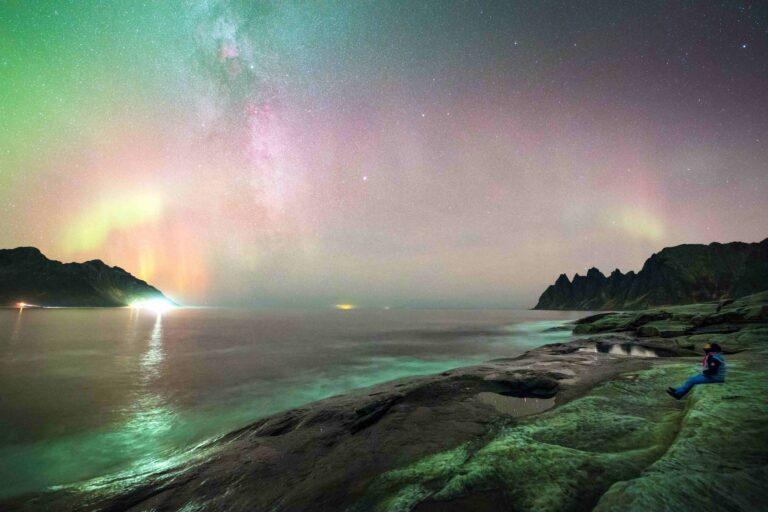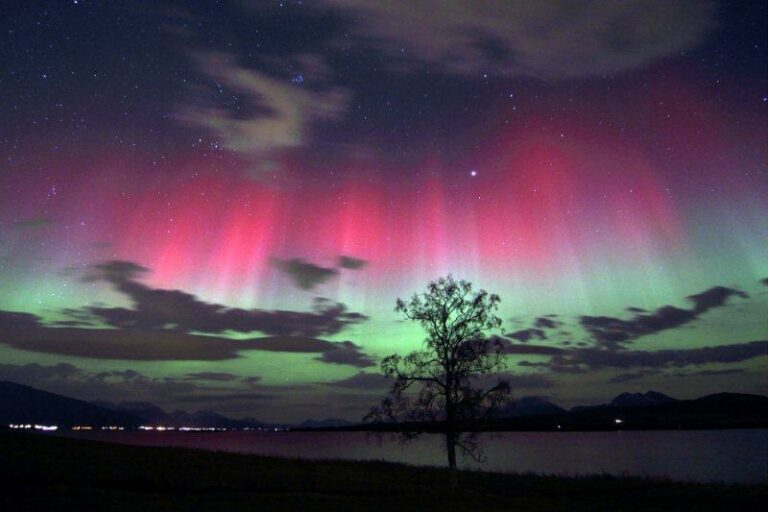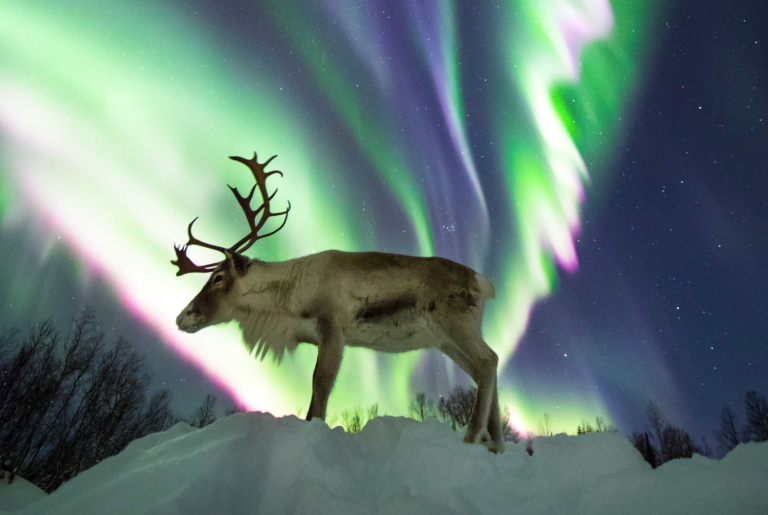What is the best time of night to see the aurora?
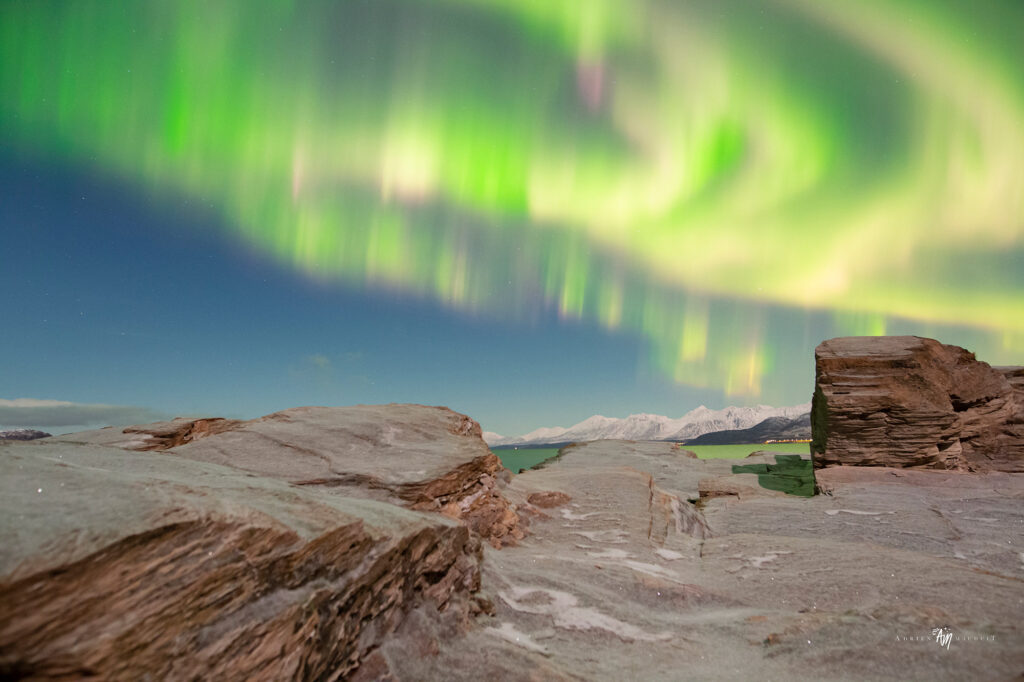
- Credits: Adrien Mauduit
Aurora chasers tend to say that the best time of the night to see the aurora is around midnight. It’s actually not as easy as this, as you will learn in this article.
The correlation between aurora visibility and location.
By definition, one will start seeing aurora if their location is under or near the actual auroral oval. The nearer you draw to it, the best chances you have. Yet, there are two things affecting your distance from the oval: Earth’s rotation and the geomagnetic activity. The former determines when you will pass either under (auroral zone) or near the oval (sub-auroral zone). You will have the best chances to see aurora then. The latter determines how widespread in latitude the oval is. Thus, your distance from the oval can also vary greatly depending on the activity, making it nearly impossible to determine a ‘best time of night’.
As a rule of thumb, you will have the highest probability to see aurora around local solar midnight (± 2 hours) as you rotate ‘inside/near’ the oval. During higher geomagnetic activity, the oval may widen largely at any time (second picture, opposite), enabling you to potentially see aurora even if you have rotated ‘out/away’ or yet haven’t rotated ‘under/near’ of the background oval.

- Credits: Adrien Mauduit
That is the simple reason why experienced chasers usually say that you can potentially expect to see aurora whenever it is dark at high latitudes. In the field, you need to be on high alert if it is dark and geomagnetic conditions are favorable. Hence the necessity to consistently monitor space weather data and the approximative oval (OVATION) if you want to be successful.
During expected enhanced geomagnetic activity at high latitudes, you should really consider putting all the chances on your side and adapt around the aurora. It means that you should be alert, updated on current data and weather, and preferably ready in the field with your gear. Don’t make the mistake of going to the restaurant or going to bed at 10pm on such a night!
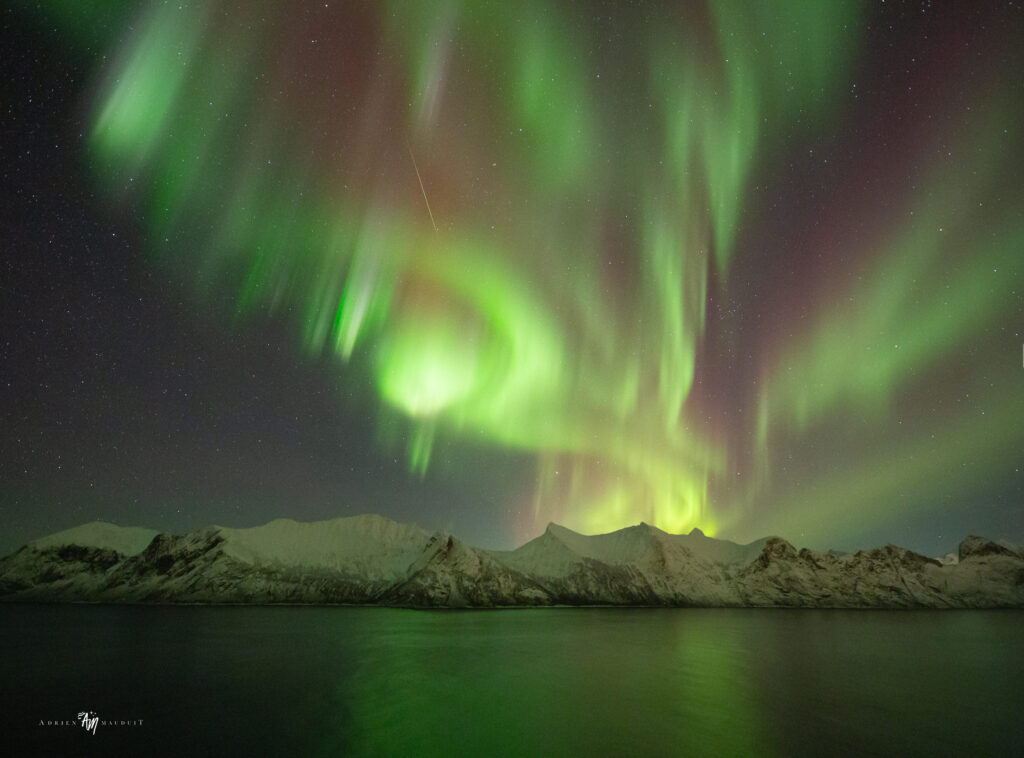
- Credits: Adrien Mauduit
Conversely, when the activity is expected to be around background levels, you can ‘take it easy’ a bit more and focus your energy on that four-hour window around your local midnight. However, remember that the aurora always does unexpected things, so, the more curious and persistent you are, the more successful you will be!
Where and when to look for aurora in the sky?
If we take into account the geomagnetic latitude (N/S position related to the geomagnetic zones: polar cap, auroral, sub-auroral), the geomagnetic longitude (E/W position related to local midnight) and the geomagnetic activity (multidirectional, mostly N/S, expansion of the auroral oval), one can actually predict with a degree of certainty where to look in the sky for aurora.

- Credits: Adrien Mauduit
An important aspect of the aurora creation that we slightly touched on on page 20, is the geomagnetic longitude. Believe it or not, your east-west position in relation to solar midnight(where the Sun is at its lowest point in the sky at night) will play a big role in where you should look in the sky for aurora. Solar midnight not only corresponds to when the auroral oval is at its closest position to the equator, but it also translates to the time/place where the inflow of particles hits first during the expansion phase of a substorm. As the flow of particles continues to enter the atmosphere, it expands in both east and west directions through the Auroral Electrojets. That is why the aurora very often looks like an arch expanding east-west in the sky!
This logically means that if you are located before solar midnight, the aurora expansion will most likely come from the east. When you have passed solar midnight, the expansion will typically seem to come from the west. This is a very useful thing to know if you are looking for a location to take pictures of the expansion phase of substorms. Before midnight, choose a location that has your desired composition towards to east, and after midnight, towards the west. This does not mean that you won’t see aurora in the west before midnight and in the east after midnight. However, in most cases, the expansions will be most spectacular when you are looking in the direction of solar midnight.
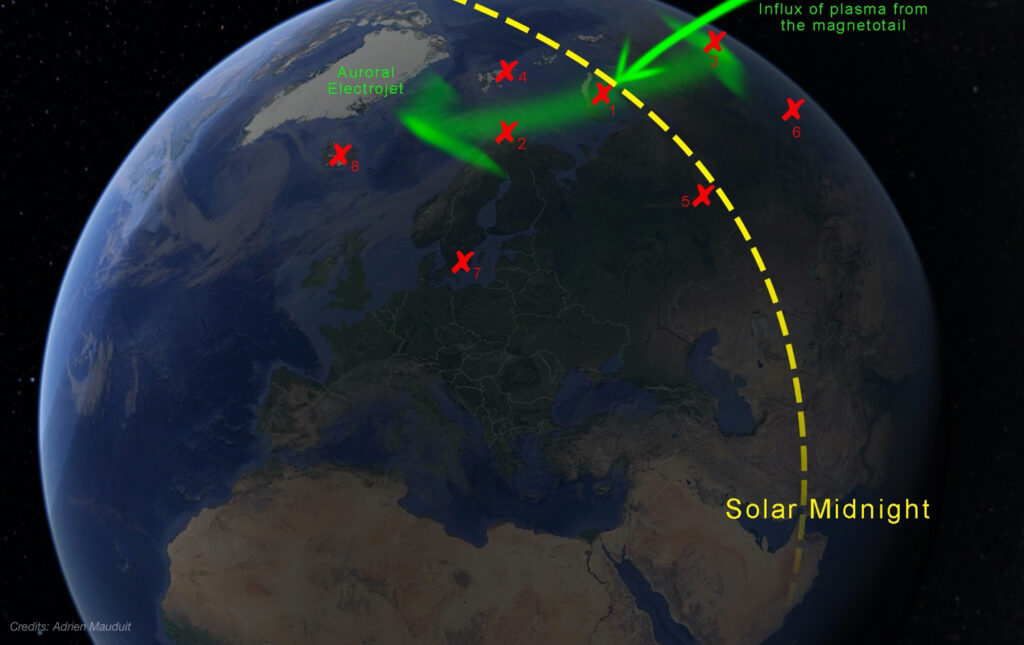
- Credits: Adrien Mauduit
In the diagram above, we represented a theoretical situation where the solar midnight runs approximately through the 60°E meridian. As most plasma particles get injected from the magnetotail into the cusps above high latitudes (minor substorm expansion), the quickly expand both eastward and westward from local midnight to constitute the actual nightside oval. In so doing, each location (represented by red crosses) will experience the show from a different perspective in the sky and will have to look in different places. An observer located at position 1 will likely have to look straight overhead as a corona may form directly there. Position 2 will mostly have to look straight east and overhead. Position 8 may have to wait a few minutes for the aurora to arrive and will have to look east. Position 3 is past solar midnight, so most of the brightening will seem to come from the west. A person in Svalbard (position 4) may have to look south-southeast to catch the best show. Position 5 will witness a arch in the north, expanding in both east and west. Position 7 will see an arch extending from ENE to NNW, with the expansion likely coming from the eastern end of it. It will be the same for position 6, but the arch will be WNW to NNE and the expansion will likely come from the western end of the arch.

- Credits: Adrien Mauduit
What is the best time of night to see the aurora?: to try and anticipate where the aurora will be in the sky, consider the on-going geomagnetic activity (how much N/S the oval expands), your geomagnetic latitude (your location within the three geomagnetic zones) and most importantly your geomagnetic longitude (position to solar midnight). Impossible to predict we would say

